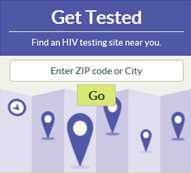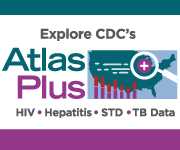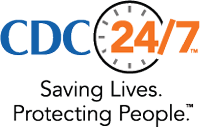2015 Youth Risk Behavior Survey (YRBS) Results Released
June 9, 2016
Today the Centers for Disease Control and Prevention (CDC) released the MMWR Surveillance Summary, “Youth Risk Behavior Surveillance – United States, 2015.” The report summarizes results from the 2015 National Youth Risk Behavior Survey (YRBS), conducted among more than 15,000 students in grades 9-12 in schools across the nation.
The YRBS monitors six categories of priority health-risk behaviors among high school students, including sexual risk behaviors that contribute to HIV, other sexually transmitted diseases (STD), and pregnancy. The newly released report shows progress in some areas of sexual risk behaviors while other areas reveal concerning behavioral trends that continue to put young people at risk.
The 2015 YRBS report shows that while the proportion of high school students who are currently sexually active has continued to decline (38 percent in 1991 compared to 30 percent in 2015), condom use among these students has also declined over time (63 percent in 2003 to 57 percent in 2015), and more than one in five currently sexually active students report drinking alcohol or using drugs before sex (21 percent). In addition, HIV testing among all students has declined (from 13 percent in 2011 to 10 percent in 2015). These concerning trends continue to put our young people at risk and highlight the need for improvements in reducing the risk of HIV/STD and pregnancy among high school students.
In addition to monitoring sexual risk behaviors among youth, YRBS serves as a platform for the rest of CDC and partners in public health and education to
- Measure progress toward achieving 21 national health objectives for Healthy People 2020 and other program and policy indicators.
- Assess trends in priority health-risk behaviors among high school students.
- Evaluate the impact of broad school and community interventions at the national, state, and local levels.
The YRBS monitors five other categories of priority health-risk behaviors that contribute to the leading causes of death, disability, and social problems among youth and adults in the United States, including
- Alcohol and other drug use,
- Tobacco use,
- Unintentional injuries and violence,
- Unhealthy dietary behaviors, and
- Physical inactivity.
The YRBS also monitors obesity, overweight, and asthma.
Among these areas, 2015 data showed that—
- Current cigarette smoking: Among high school students the prevalence of cigarette smoking has dropped from 28 percent in 1991 to 11 percent in 2015—the lowest level since the survey began in 1991.
- E-cigarettes: Despite improvements in cigarette use, the use of electronic vapor products, including e-cigarettes, among students poses a new challenge. New data from the 2015 survey show that 24 percent of high school students used electronic vapor products during the past 30 days.
- Prescription drug use: Despite a decrease from 2011 to 2015, nationwide, 17 percent of students had taken prescription drugs (e.g., Oxycontin, Percocet, Vicodin, codeine, Adderall, Ritalin, or Xanax) without a doctor’s prescription one or more times in their life.
- Texting or emailing while driving: Nationwide, 42 percent of students who had driven a car or other vehicle during the past 30 days texted or emailed while driving, which is unchanged from 2013.
- Obesity and sedentary-related behaviors: There was a significant decrease in students drinking soda one or more times a day from 27 percent in 2013 to 20 percent in 2015, however, sedentary behaviors continue to cause concern. From 2003-2015 the percentage of high school students using a computer three or more hours per day (for non-school related work) nearly doubled from 22 percent to 42 percent.
Since 1991, progress has been made in decreasing the prevalence of many health risk behaviors among high school students nationwide in areas such as cigarette use. But, there is still work to be done. Progress in other areas has decreased, such as increasing risk behaviors associated with HIV/STD infection.
The data from YRBS are used widely to help develop and evaluate school and community programs and can help communities, schools, and students decrease health risk behaviors among youth and improve health outcomes.
The findings from the 2015 YRBS report remind us that continued efforts are needed to ensure that youth have the knowledge and skills needed to protect themselves now and in the future. We hope that you find the results of this important report to be useful in your efforts to help our youth stay safe and healthy.
Please review the 2015 YRBS results and sign up for email updates about new YRBS products on the CDC Healthy Youth Website.
Sincerely,
/Jonathan Mermin/
Jonathan H. Mermin, M.D., MPH
RADM and Assistant Surgeon General, USPHS
Director
National Center for HIV/AIDS, Viral Hepatitis, STD, and TB Prevention
Centers for Disease Control and Prevention
www.cdc.gov/nchhstp
/Stephanie Zaza/
Stephanie Zaza, MD, MPH
Director, Division of Adolescent and School Health
National Center for HIV/AIDS, Viral Hepatitis, STD, and TB Prevention
Centers for Disease Control and Prevention
www.cdc.gov/healthyyouth
- Page last reviewed: June 28, 2016
- Page last updated: June 28, 2016
- Content source:


 ShareCompartir
ShareCompartir


